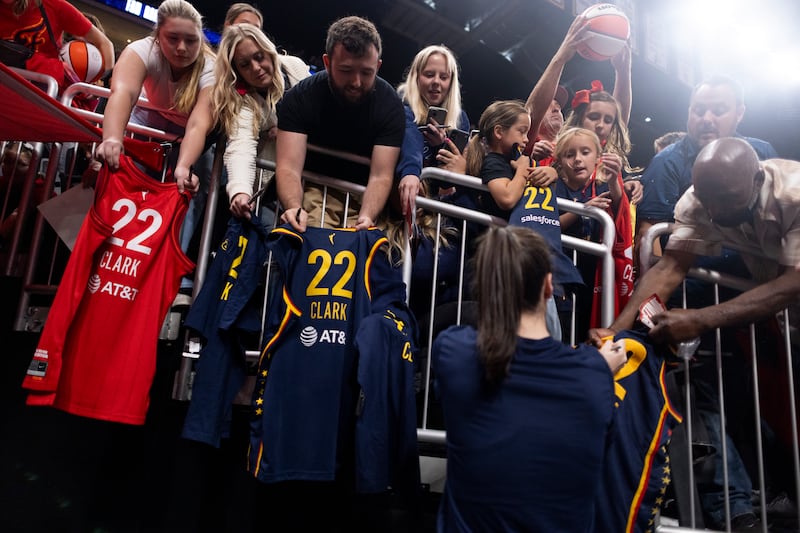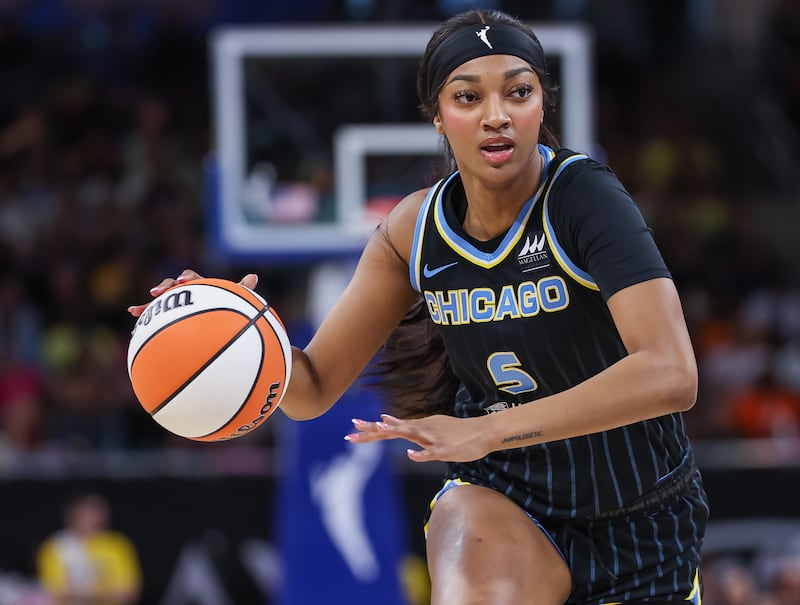In an interesting plot device, Caitlin Clark played the part of a regular basketballer in the first half of last Sunday’s matinee between the Indiana Fever and the Atlanta Dream.
After the interval, the drama was dialled down, normal programming resumed. Finishing with 26 points, 12 assists and five rebounds in a 104-100 victory, the stats merely hint at the artistic merit of her performance.
The now obligatory highlight reel included a perfectly weighted full-court gift to team-mate NaLyssa Smith, a step-back three set up by a between-the-legs dribble, and several fadeaway jumpers. Her every outing comes franked by myriad cameos of almost nonchalant excellence.
“What Caitlin Clark has done for the game is generational,” said Nancy Lieberman, a Hall of Famer who won Olympic gold at 18, played her last pro game at 50, and coached at every level of the sport.
Justin Kluivert’s new-born child proves quite the inconvenience for dedicated fantasy football managers
Stephen Bradley: ‘After I got stabbed, I messed around for a year. I was angry’
Sportswoman of the Month for January - Hazel Finn (basketball)
Paddy Cullen’s legacy will endure as one of the greats who forged Gaelic football’s most storied rivalry
“As a baller to a baller, I just want to say thank you, to you Caitlin Clark. For just lifting our game up . . . You’re going to make all these women multimillionaires one day. Like Tiger did. Like Michael Jordan did. And we shouldn’t hate on her. We should celebrate her.”

A single quote captures all the madness, good, bad, and ugly, surrounding the most compelling character in the not quite three decades of the WNBA’s existence.
Comparing any newcomer in any sport, however talented, with Woods and Jordan is typically considered unfair, the last resort of the lazy hack. In this case, everything so far suggests it is wholly accurate and justified.
Clark is changing the game before our eyes, shattering box office and scoring records on a near weekly basis during a rookie campaign like no other. Coming into the pro ranks carrying the weight of LeBron-esque hype, she has somehow managed to live up to the advance billing.
The fastest player to 300 career assists, the first rookie to record a triple-double, she has broken the single-game record for assists (19) and transformed the Fever from perennial also-rans into a contender in the forthcoming play-offs.
The team drew 82,857 fans to her first five home games, more than they attracted all last season and have so many sell-outs they are considering renting the Indianapolis Colts’ NFL stadium.
The Atlanta Dream moved their clash with the Fever to an NBA arena and brought in five times their normal attendance; many of the newcomers are young girls in Clark 22 jerseys. Other clubs have opted for larger venues to cash in on her transcendent popularity too.
There’s much to celebrate and admire, not least the graceful way she carries herself amid all the hoopla. Yet, as Lieberman referenced in her paean, Clark has, through no fault of her own, become embroiled in America’s toxic culture wars.
Since her initial rise to prominence at the University of Iowa, her career has been hijacked by others for their own political ends and everything she does must be viewed by some through the prism of race. Which leads to multiple interpretations of what she has achieved.
In a league where 60 per cent of players are black, there are those who think Clark gets excessive praise and commercial attention because she’s white. Others reckon she doesn’t get enough plaudits from peers and pundits because she’s white. For everyone who believes refs give her too many breaks because she’s white, there are people contending the same officials persecute her, you guessed it, because she’s white.
On different days, there is probably some truth to all those opinions but bloviators from the right-wing industrial outrage complex, who scarcely knew women’s basketball existed before Clark, exploit every story around her to stir up animus. Little wonder then that extremists are sending racist bile to Angel Reese, another superb rookie with the Chicago Sky, her greatest rival since college, and an African American.

“People should not be using my name to push those agendas,” said Clark about the lunatic fringe.
“It’s disappointing. It’s not acceptable. Treating every single woman in this league with the same amount of respect, I think, it’s just a basic human thing that everybody should do. I don’t put too much thought and time into thinking about things like that and, to be honest, I don’t see a lot of it. Basketball is my job. Everything on the outside, I can’t control that.”
Her every public utterance is parsed, and some didn’t think that statement went far enough in terms of calling out white nationalists. That she is seriously supposed to rein in a hateful demographic beyond society’s control sums up the ludicrous demands placed upon her. Expected to be all things to all people, performing the way she has on the court, with so much discordant background noise, might be her greatest feat.
Within seven years of Tiger turning pro, the average winner’s cheque for a PGA Tour event went from $406,000 to almost $1m, a niche sport entered the mainstream, and even mundane tournaments became appointment television.
Before this season, no televised WNBA game had attracted a million viewers since 2008. Clark has managed it 19 times so far. With league merchandise sales up 1,000 per cent, these numbers explain why the median salary of $147,000 may rise to half a million when the new collective bargaining agreement is negotiated next year. By then the signature shoe for which Nike paid her $28m will be in stores.
Tiger? Jordan? Yeah.















